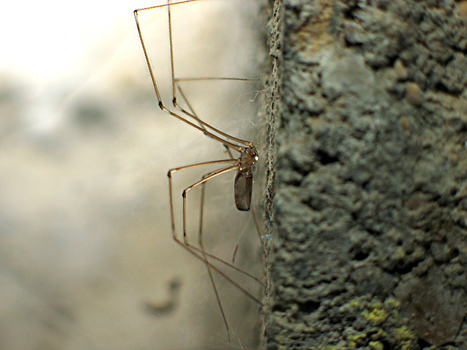Organisées en sociétés coopératives complexes, les Oecophylla des forêts équatoriales ont su développer de remarquables modes de communication. Des sociétés qui n’ont rien à envier aux structures sociales humaines.
Get Started for FREE
Sign up with Facebook Sign up with X
I don't have a Facebook or a X account

 Your new post is loading... Your new post is loading...
 Your new post is loading... Your new post is loading...
Depuis le temps que l'on en parlait, la voici enfin ! Une clé de détermination de terrain, réalisée par le Conservatoire en collaboration avec le GIRAZ, association d'entomologistes spécialisés sur les zygènes, dans le cadre de l'atlas régional des papillons de jour et zygènes de Midi-Pyrénées.
[...]
Quelques liens :
Bernadette Cassel's insight:
via La Dépêche "Saint-Beauzély. Profession : chasseuse de papillons" http://www.ladepeche.fr/article/2013/09/01/1699470-profession-chasseuse-de-papillons.html
Texte introductif général fournissant des informations de base aux chapitres du Code sanitaire pour les animaux terrestres sur les maladies des abeilles
Les vétérinaires ont généralement à s’occuper de vertébrés, qui ne présentent pas de grandes différences physiologiques entre eux ; en revanche les insectes se distinguent grandement des vertébrés aux plans anatomique et morphologique. Prise individuellement, l’abeille est dotée de toutes les fonctions physiologiques vitales mais est incapable de survivre seule. Elle est un individu parmi les milliers qui composent une société extrêmement complexe : la colonie d’abeilles. Suivant la saison, une colonie d’abeilles contient de 10 000 à 50 000 ouvrières stériles, une femelle fertile et fécondée (la reine) et, durant le printemps et l’été, quelques mâles (les faux-bourdons) chargés de féconder la reine. Les abeilles mellifères ne vivant que sous forme de colonie, du point de vue biologique et vétérinaire, c’est la colonie tout entière qui est considérée comme l’unité animale, tandis que le rucher (ensemble de ruches hébergeant chacune une colonie) constitue l’unité épidémiologique.
Dans la nature, les abeilles nidifient dans les cavités des troncs d’arbres et d’autres espaces creux. [...]
Sciences de la Vie et de la Terre
Les SVT dans l'académie de Versailles
L'image du mois :
Que diable !... Une empuse ! - Diablotin rencontré en Andalousie. 1 / 6 > [Diaporama]
Paul Brown admires the industrious creatures, who live in colonies of up to 500,000, build thatched, solar-powered, centrally-heated nests up to two metres high, and help control forest pests
by Matthew Cobb
Espèces :
Plantes Escargots terrestres Escargots Helicidae (coquilles) Orthoptera (criquets) Oiseaux 1 Oiseaux 2 Mammifères Amphibiens et reptiles
Bernadette Cassel's insight:
À la fin du jeu, un clic sur une image mène à la fiche de l'espèce. Exemple :
→ Miramelle piémontaise http://inpn.mnhn.fr/espece/ScientificName/Epipodisma%20pedemontana
The tiny insect has been behind amazing discoveries in genetics – and now it's a mainstay of embryology, writes Alice Roberts ___________________________________________________________________ L'étude : • Changes in Hox genes’ structure and function during the evolution of the squamate body plan Autres liens de cet article : • Gène Hox • The Nobel Prize in Physiology or Medicine 1933
Isabella Rossellini présente sa nouvelle série "Mammas". Elle y explore l'instinct maternel dans le monde animal.
Bernadette Cassel's insight:
AUTRE VIDÉO :
→ Making of - "Mammas" d'Isabella Rossellini http://videos.arte.tv/fr/videos/making-of-mammas-d-isabella-rossellini--7303826.html
SUR VARIÉTÉS ENTOMOLOGIQUES : → Bestiaire d'amour au Printemps des comédiens http://sco.lt/558sXx
→ Théâtre : sexe, amour et animaux avec Isabella Rossellini http://sco.lt/9MCuNl
Le syrphe est une mouche de 9 à 12 mm aux allures de petite guêpe. Les anneaux oranges et noirs sur son abdomen la rendent facilement identifiable. Malgré so...
Les maladies à tiques sont en augmentation en Belgique et dans les pays alentours. Néanmoins, il est difficile de connaître l'ampleur du problème car les cas de maladie ne sont pas répertoriés systématiquement. Il existe de nombreuses lacunes dans les connaissances de la situation en Belgique: Où sévissent ces maladies et les tiques qui les transmettent? Quelles sont les personnes, environnements et activités à risque? Quels sont les symptômes et sont-ils différents d'une région à l'autre? Dans ce contexte votre témoignage peut vraiment nous aider - ce formulaire en ligne permet de recueillir les informations détaillées que vous seul(e) possédez. Enquête morsure et symptômes sur personnes
Un article récent décrit les espèces de tiques présentes en Belgique, la possibilité d'être mordu sur tout le territoire dans les zones avec végetation ( y compris les dunes avec végétation, les jardins, etc...). L'article propose également des cartes de distribution des tiques, la listes de pathogènes potentiellement présents dans nos tiques belges et une carte de la distribution des pathogènes déjà trouvés sur le territoire. L'article n'est malheureusement disponible qu'en anglais en libre accès sur le site de Parasites and Vectors mais les cartes offrent une bonne approche visuelle. Référence: Valerie Obsomer, Marc Wirtgen, Annick Linden, Edwin Claerebout, Paul Heyman, Dieter Heylen, Maxime Madder, Jo Maris, Maude Lebrun, Wesley Tack, Laetitia Lempereur, Thierry Hance and Georges Van Impe: Spatial disaggregation of tick occurrence and ecology at a local scale as a preliminary step for spatial surveillance of tick-borne diseases: general framework and health implications in Belgium . Parasites & Vectors 2013, 6:190 Tiques de Belgique et pathogènes associés
[...]
Bernadette Cassel's insight:
→ Tiques, borréliose de Lyme et maladies associées
→ Ne sous-estimez pas le danger que représentent les tiques !!
Découvrez ce moment magique où la chenille décide de passer au stade de chrysalide (papillon Machaon : papilio machaon)
« Transformation d'une chenille de papillon Machaon en chrysalide » (cliquer sur l'image)
Un appel au public pour mieux comprendre nos forêts
Afin de vous aider à participer à l’opération, différents outils sont disponibles en téléchargement. N'hésitez pas à les imprimer et à les emporter avec vous lors de vos balades en forêt !
• Des cartes postales
Bernadette Cassel's insight:
SUR VARIÉTÉS ENTOMOLOGIQUES :
|
Ce lien n'est plus valide Accès à un contenu équivalent (au 05.10.2016) :
___________________________________________________________________
L'enquête Insectes et Ciel étoilé La biodiversité -Noé Conservation- Sauvegarde de la biodiversité
On pourrait penser que la nature dort la nuit, mais c’est tout le contraire ! Saviez-vous par exemple qu’il existe en France près de 20 fois plus d’espèces de papillons de nuit que de papillons de jour ? A l’instar de leurs homologues diurnes, elles jouent également un rôle important dans l’équilibre des écosystèmes en participant notamment à la pollinisation. Or, des études montrent qu’un certain nombre d’organismes sont impactés par la pollution lumineuse (oiseaux, chauves-souris, reptiles...). Qu’en est-il des insectes nocturnes et comment évaluer cet impact ? C’est à cette question que vous propose de répondre l’enquête participative « Insectes et Ciel étoilé », un projet initié par Noé Conservation, le Muséum national d’Histoire naturelle, l’Office pour les insectes et leur environnement et l’Association Française d’Astronomie. C’est le premier programme de sciences participatives doté d’un protocole double alliant astronomie et biodiversité. »
→ Guide technique de l'enquête Insectes et Ciel étoilé (format pdf, comprend un "Guide d’identification Insectes" de 17 p.)
Bernadette Cassel's insight:
SUR VARIÉTÉS ENTOMOLOGIQUES :
On entend souvent dire que les insectes du Québec n’ont rien d’intéressant. Nos espèces ne devraient avoir aucun complexe avec quelque autre espèce exotique que ce soit en ce qui a trait à la couleur, à la forme et à l’allure générale.
Une guêpe mutante
[...]
Bernadette Cassel's insight:
Une série de 26 films d'animation d'une minute chacun, aborde différents concepts scientifiques liés à la diversité du vivant sur Terre autour de trois thématiques : les équilibres et déséquilibres entre les espèces vivantes, les mécanismes de...
Biologist and photographer Piotr Naskrecki continues to produce great posts on his travels in Africa. You can see them at his website The Smaller Majority, and this week he's posted on the Empusida... ___________________________________________________________________ Traduction (d'après le début de l'article) : Piotr Naskrecki, biologiste et photographe, publie de grands textes sur ses voyages en Afrique sur son site :
→ The Smaller Majority http://thesmallermajority.com/
Posté cette semaine, son billet sur les Empusidae, une petite famille de Mantes comprenant 28 espèces :
→ Empusids http://thesmallermajority.com/2013/08/25/empusids/
BEHAVIOUR 2013 4 – 8 AUGUST 2013 NEWCASTLEGATESHEAD, UK International Ethological Conference Association for the Study of Animal Behaviour Programme Click Here to view our latest conference programme Click Here to view a list of all speakers and session timings Click Here to download the abstract book for conference Plenary talks: Iain Couzin, Princeton University, USA Iain’s work addresses adaptive collective phenomena in animal groups such as bird flocks, fish schools and insect swarms. He uses a combination of experimental and theoretical approaches. His talk will explore the principles of collective intelligence, and by explicitly reconstructing sensory networks in mobile animal groups, how distributed sensing and decision-making emerge from the dynamics of social interactions. [...] Sharoni Shafir, Hebrew University of Jerusalem, Israel Sharoni's interests are in cognition and behavioural ecology of honeybees. He has extended the study of risk-sensitivity and context-dependent evaluations in decision making from the vertebrate systems where they are usually studied to the bee, producing a series of remarkable experimental studies. [...] 
Bernadette Cassel's comment,
August 25, 2013 5:31 PM
BEHAVIOUR 2013
Abstract Book : BEHAVIOUR 2013 Symposia Abstracts à télécharger ici : http://iec2013.com/downloads/abstractbook.pdf
Un peu d'huile de coude, et deux sous de bonne volonté
[...]
It's a blind spot that extends even to science, where Orthopteran species distributions and population trends are poorly described. Entomologist Sam Droege of the United States Geological Survey hopes you can change this. Using iNaturalist, an online citizen science platform, he's launched the Atlas of North American Calling Insects.
Anyone with a smartphone and a SoundCloud account can sign up to submit their Orthoptera observations, and it's not even necessary to photograph the insects. Just use your phone to record what you hear, send in the audio, and somebody will identify it. If enough people participate, they can turn the sound of summer into a valuable scientific resource.
On the following pages, WIRED takes a look and gives a listen to some of Droege's calling insects.
[...]
Bernadette Cassel's insight:
Enregistrements de chants d'Orthoptères (sauterelles, grillons, criquets) d'Amérique du Nord :
→ Atlas of North American Calling Insects (Pilot) http://www.inaturalist.org/projects/atlas-of-north-american-calling-insects-pilot
Les chercheurs ont obtenu des résultats encourageants dans la lutte contre ce fléau qui touche plus de 200 millions de personnes chaque année.
Le paludisme tue plus de 660.000 personnes chaque année, selon l’Organisation mondiale de la santé (OMS). Toutes les minutes, un enfant meurt des suites de la maladie. Le début de l’année 2013 a été marqué par plusieurs avancées contre ce fléau. La mise au point d'un vaccin semble plus que jamais à portée de main.
[...]
Bernadette Cassel's insight:
→ Protection Against Malaria by Intravenous Immunization with a Nonreplicating Sporozoite Vaccine http://www.sciencemag.org/content/early/2013/08/07/science.1241800.abstract
(Unconventional Vaccine Shows Promise Against Malaria http://www.sciencemag.org/content/341/6146/605)
Bernadette Cassel's insight:
→ Cicindela campestris (Cicindèle champêtre) partie 1 http://www.viltansou.com/cicindela-campestris-cicindele-champetre/#!prettyPhoto
À VOIR :
→ Les CICINDELIDES ou « Cicindèles », des larves à l’affût et des adultes coureurs http://aramel.free.fr/INSECTES11bis-1.shtml
This report presents the European Grassland Butterfly Indicator, based on national Butterfly Monitoring Schemes (BMS) in 19 countries across Europe, most of them in the European Union.
Bernadette Cassel's insight:
→ The European Grassland Butterfly Indicator 1990–2011.pdf [1.3 MB] http://www.eea.europa.eu/publications/the-european-grassland-butterfly-indicator-19902011
Choumet V, Attout T, Chartier L, Khun H, Sautereau J, et al. (2012) Visualizing Non Infectious and Infectious Anopheles gambiae Blood Feedings in Naive and Saliva-Immunized Mice. PLoS ONE 7(12): e50464. doi:10.1371/journal.pone.0050464
Bernadette Cassel's insight:
Via GuruMeditation
→ Regardez de l’intérieur la piquante tête chercheuse du moustique en quête de sang (Vidéos)
« D’incroyables séquences vidéos de la trompe d’un moustique cherchant une veine, réalisées à l’aide d’un microscope de pointe par Valérie Choumet et ses collègues de l’Institut Pasteur à Paris, révèlent comment un moustique pique et suce le sang... »
Embranchement : Arthropodes Pholcus phalangioides Le pholque phalangide est très facilement reconnaissable à ses longues pattes grêles et à son corps cylindrique. Il se laisse pendre de sa toile en attendant qu'une proie vienne s'y échouer. Il l'emmaillotera alors rapidement dans du fil de soie.
Malgré son aspect fragile, cette araignée est capable de tuer d'autres araignées plus impressionnantes et massives comme des tégénaires. Elle ne présente cependant aucun danger pour l'Homme, sa petite taille l'empêchant de percer la peau humaine.
Bernadette Cassel's insight:
Curieux de nature - Galerie et blog animaliers
→ Présentation http://www.curieux-de-nature.com/index.php?page=presentation
→ Index des espèces par nom français http://www.curieux-de-nature.com/index.php?page=listeindex
|



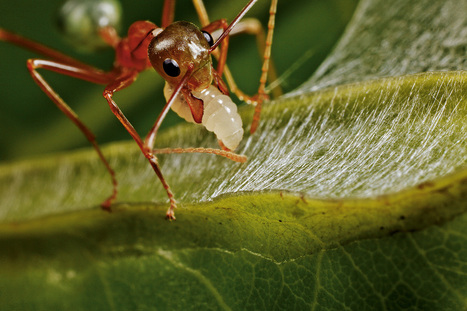

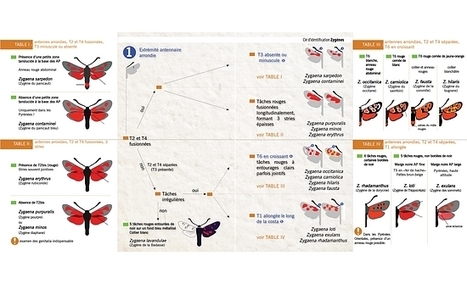


![La fourmi rousse des bois [en anglais] | Insect Archive | Scoop.it](https://img.scoop.it/BnJ74m9p_L7y7vTf3PTS9zl72eJkfbmt4t8yenImKBVvK0kTmF0xjctABnaLJIm9)
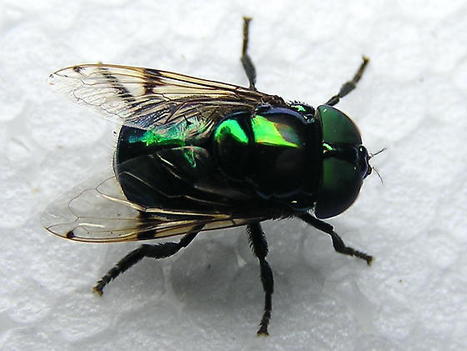
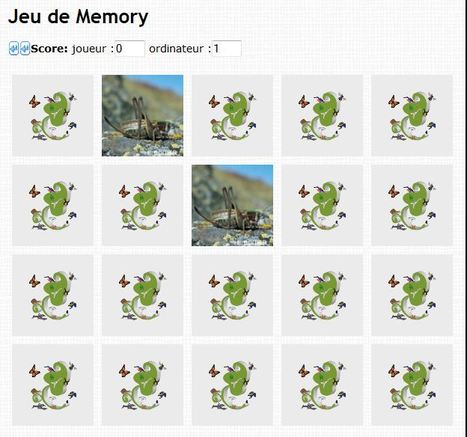
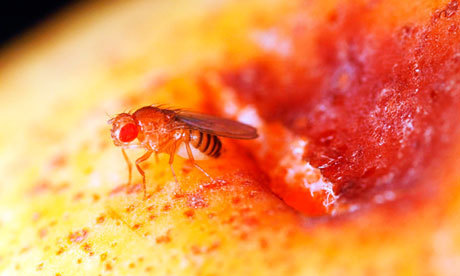
![[Vidéos] "Mammas" d'Isabella Rossellini | Insect Archive | Scoop.it](https://img.scoop.it/EMDjrCX3oPqV2e967JucLjl72eJkfbmt4t8yenImKBVvK0kTmF0xjctABnaLJIm9)
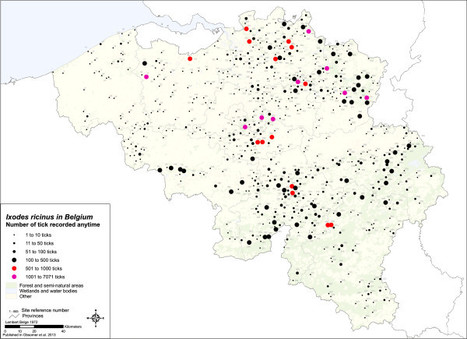
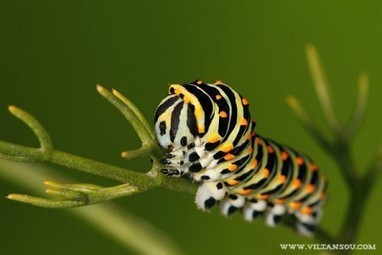
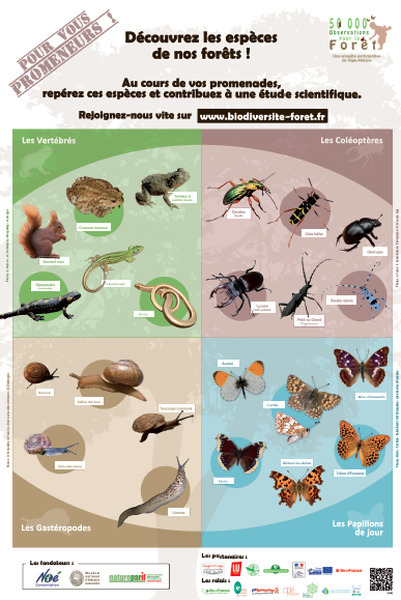
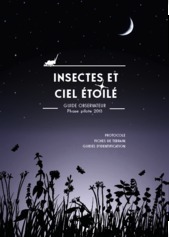
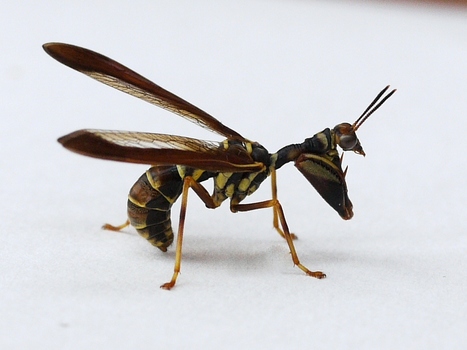
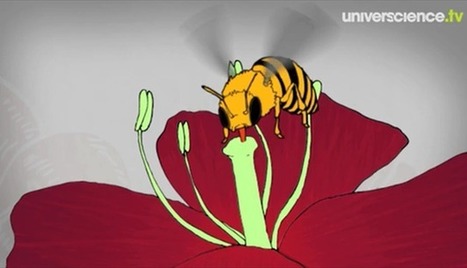

![Comportement animal : Programme du Symposium IEC 2013 [en anglais] | Insect Archive | Scoop.it](https://img.scoop.it/zq1yy0iSiGnsIBee5CCkcDl72eJkfbmt4t8yenImKBVvK0kTmF0xjctABnaLJIm9)



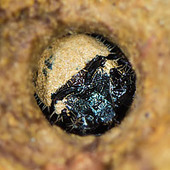
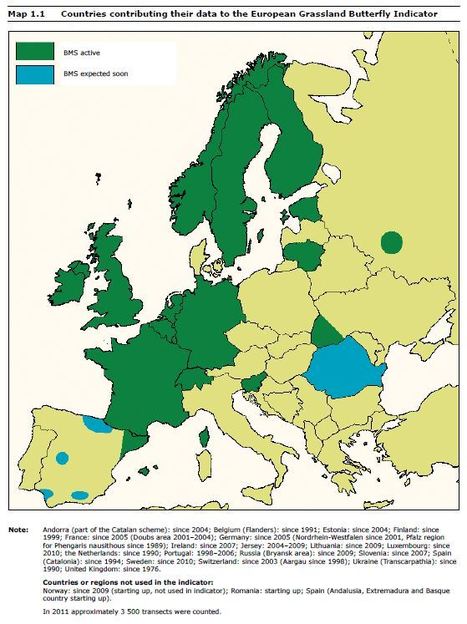
![Le repas de sang du moustique Anopheles gambiae, vecteur du paludisme, étudié en vision rapprochée [en anglais] | Insect Archive | Scoop.it](https://img.scoop.it/QTbKmmQB2sy6QdlmepjSHjl72eJkfbmt4t8yenImKBVvK0kTmF0xjctABnaLJIm9)
